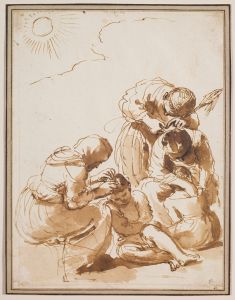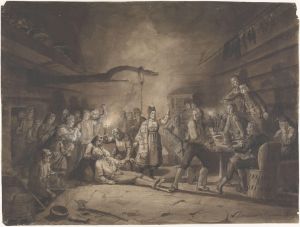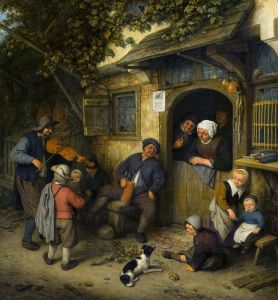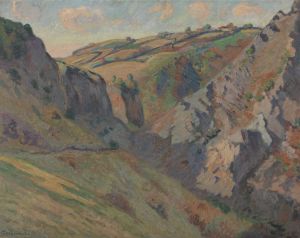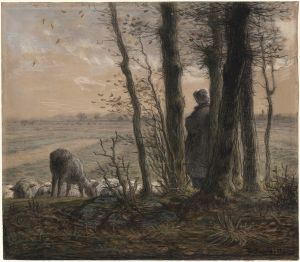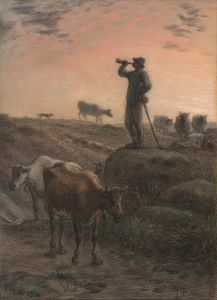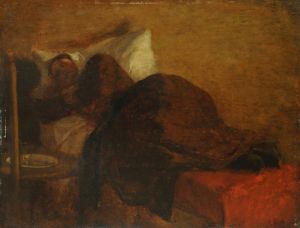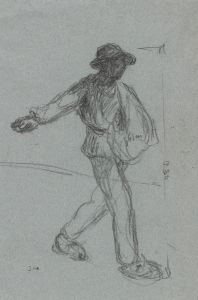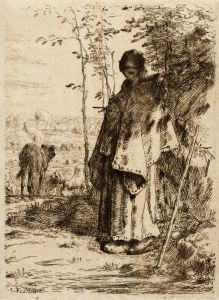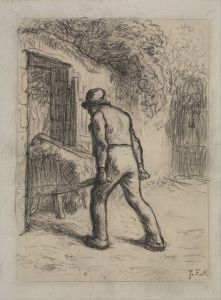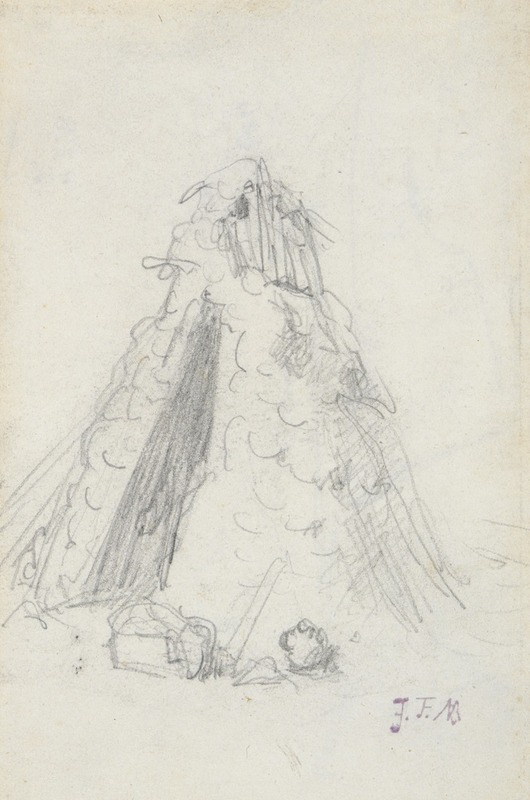
Open Air Oven
A hand-painted replica of Jean-François Millet’s masterpiece Open Air Oven, meticulously crafted by professional artists to capture the true essence of the original. Each piece is created with museum-quality canvas and rare mineral pigments, carefully painted by experienced artists with delicate brushstrokes and rich, layered colors to perfectly recreate the texture of the original artwork. Unlike machine-printed reproductions, this hand-painted version brings the painting to life, infused with the artist’s emotions and skill in every stroke. Whether for personal collection or home decoration, it instantly elevates the artistic atmosphere of any space.
Jean-François Millet, a prominent 19th-century French painter, is best known for his depictions of rural life and peasant subjects. His work often reflects the dignity and hardship of rural labor, capturing the essence of the countryside and its inhabitants. One of his lesser-known works is "Open Air Oven," which, like many of his paintings, focuses on the theme of rural life.
Millet was a founding member of the Barbizon School, a movement that emerged in France during the mid-19th century. This group of artists sought to break away from the traditional academic art styles and instead focused on naturalism and realism. They were particularly interested in painting landscapes and scenes of rural life, often working en plein air, or outdoors, to capture the natural light and atmosphere of the countryside.
"Open Air Oven" fits within this context, as it portrays a scene that would have been familiar to many rural inhabitants of the time. The painting likely depicts a simple, everyday activity, emphasizing the connection between people and their environment. Millet's work often highlights the relationship between humans and nature, and this painting is no exception. By focusing on an open-air oven, Millet draws attention to the basic, yet essential, aspects of rural life and sustenance.
Millet's technique in "Open Air Oven" would have been consistent with his other works, characterized by a muted color palette and a focus on the play of light and shadow. His brushwork often conveys a sense of texture and depth, bringing the scene to life. The painting likely features earthy tones, reflecting the natural materials and environment of the rural setting.
Throughout his career, Millet faced both praise and criticism for his focus on peasant life. Some contemporaries appreciated his honest portrayal of rural subjects, while others criticized him for what they perceived as an overly idealized or sentimental view of peasant life. Despite this, Millet's work has had a lasting impact on the art world, influencing later movements such as Realism and Impressionism.
"Open Air Oven," while not as famous as some of Millet's other works like "The Gleaners" or "The Angelus," still embodies the themes and techniques that define his oeuvre. It serves as a testament to Millet's dedication to portraying the lives of ordinary people with dignity and respect. His work continues to be celebrated for its ability to capture the beauty and hardship of rural life, offering viewers a glimpse into a world that was rapidly changing during the 19th century.
In summary, "Open Air Oven" by Jean-François Millet is a reflection of the artist's commitment to depicting rural life with authenticity and empathy. Through his careful attention to detail and his ability to convey the atmosphere of the countryside, Millet's work remains an important part of the history of art, offering insights into the lives of those who lived and worked in the rural landscapes of 19th-century France.






